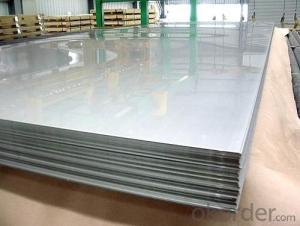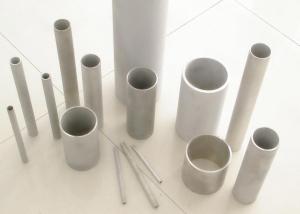SUS310 Stainless Steel Plate price per kg
- Loading Port:
- Shanghai
- Payment Terms:
- TT OR LC
- Min Order Qty:
- 3 m.t.
- Supply Capability:
- 1000 m.t./month
OKorder Service Pledge
OKorder Financial Service
You Might Also Like
Specification
SUS310 stainless steel plate price per kg
Product Description
1. Material: SUS310 / SUS310S
| C | Si | Mn | P | S | Cr | Ni |
| ≤0.080 | ≤1.50 | ≤2.00 | ≤0.045 | ≤0.030 | 24.00~26.00 | 19.00~22.00 |
2. Standard: ASTM, AISI,JIS, DIN,GB
3.Cold rolled 310 stainless steel plate
Thickness : 0.3mm-3.0mm
Width : 1000mm/1219mm/1500mm
Length : 2000mm/2438mm/4000mm/6000mm or cutting randomly
Model size : 0.3mm-3.0mm(thickness)*1000mm(width)*2000mm(Length)
0.3mm-3.0mm(thickness)*1219mm(width)*2438mm(Length)
0.3mm-3.0mm(thickness)*1500mm(width)*4000mm(Length)
Surface : 2B, BA, 8K, HL, 2D, NO.3 , NO.4 , Golden 8K, Black 8K etc.
4.Payment : Usually 30% T/T as deposit , and the balance against B/L copy .Or L/C at sight .
5. Package: Kraft paper+Hard board+metal/wooden pallet+metal strip or as customer requirement.
6. USE: construction.machinebuilding,container manufacturing,shipbuilding,bridges and so on.
Maintenance
Maintenance of stainless steel sheet
(1) Regular cleaning and maintenance
(2) Pay attention to prevent the occurrence of the phenomenon of surface scratches
(3) Use soap, weak detergent or warm water to remove surface dust, dirt
(4) In addition to the surface of the binder with alcohol or an organic solvent (ether, benzene)
(5) Use neutral detergent or ammonia solution in addition to surface oil
(6) With 10% nitric acid or abrasive detergent in addition to the surface of the embroider caused by the dirt.
Packaging & Shipping
1.Packaging:All products are packaged according to the Standard export packing.In order to prevent friction damage and water erosion and so on.
2.Shipping: Ocean transportation,land transportation or air transportation.



- Q: Can stainless steel sheets be used for outdoor applications?
- Yes, stainless steel sheets can be used for outdoor applications. Stainless steel is highly resistant to corrosion, making it an ideal material for outdoor use. It can withstand exposure to moisture, saltwater, and extreme weather conditions without rusting or deteriorating. Stainless steel sheets are commonly used in outdoor structures such as fences, handrails, roofs, and cladding. They are also used in outdoor appliances, equipment, and decorative elements. Additionally, stainless steel sheets can be painted or coated to further enhance their resistance to outdoor elements and to match the desired aesthetic. Overall, stainless steel sheets are a durable and reliable choice for outdoor applications.
- Q: Stainless steel plate more than the thickness of the wire can not be drawn ah?
- It seems more than 8 mm bar, hot rolled on the surface does not look good, 6 mm 304 stainless steel plate, as well as cold rolled, you can wire drawing
- Q: Can stainless steel sheets be used for food packaging?
- Yes, stainless steel sheets can be used for food packaging. Stainless steel is a durable and non-reactive material that does not impart any taste or odor to the food. Additionally, it provides excellent protection against moisture, oxygen, and contaminants, making it suitable for food packaging applications.
- Q: Can stainless steel sheets be used in chemical processing plants?
- Yes, stainless steel sheets are commonly used in chemical processing plants due to their excellent corrosion resistance and high strength properties, making them suitable for handling various chemicals and harsh environments.
- Q: What is the difference between stainless steel sheets and regular steel sheets?
- Stainless steel sheets and regular steel sheets differ primarily in their composition and properties. Stainless steel sheets are made primarily of iron and contain a minimum of 10.5% chromium, which gives them their unique stainless properties. Regular steel sheets, on the other hand, are made primarily of iron and carbon, with no significant amount of chromium. The presence of chromium in stainless steel sheets provides several distinct advantages. Firstly, it enhances the corrosion resistance of the material, making it highly resistant to rust and staining. This makes stainless steel sheets suitable for applications in environments where moisture or exposure to corrosive substances is a concern, such as in the food and beverage industry or marine applications. Additionally, stainless steel sheets have excellent heat resistance, making them suitable for high-temperature applications. They can withstand extreme temperatures without losing their structural integrity, which regular steel sheets may not be able to tolerate. Another key difference lies in the appearance of the two materials. Stainless steel sheets have a bright, reflective surface due to their chromium content, giving them a lustrous and modern look. Regular steel sheets, on the other hand, have a duller and less polished appearance. Furthermore, stainless steel sheets are often more expensive than regular steel sheets due to the additional manufacturing processes and the higher cost of the chromium alloy. However, the enhanced corrosion resistance and durability provided by stainless steel sheets can often justify the higher cost in various applications. In summary, stainless steel sheets differ from regular steel sheets in terms of their composition, properties, appearance, and cost. Stainless steel sheets offer superior corrosion resistance, heat resistance, and a visually appealing surface, making them ideal for specific applications where these attributes are required. Regular steel sheets, on the other hand, are more affordable but lack the unique properties of stainless steel.
- Q: What's the difference between cold rolling and hot rolling of stainless steel plate?
- Cold rolling and hot rolling are different processes, and cold rolling is usually made by longitudinal rolling. Cold rolling process usually includes preparation of raw materials, pickling, rolling, degreasing, annealing (heat treatment), finishing and so on. Cold rolling takes hot rolling product as raw material, and the raw material should be removed before cold rolling so as to ensure the surface cleanness of cold rolling products.
- Q: How do stainless steel sheets compare to other materials?
- Stainless steel sheets offer several advantages over other materials. They are highly resistant to corrosion, heat, and chemicals, making them suitable for various applications. Stainless steel is also durable, strong, and low maintenance, providing long-term value. Additionally, it has an attractive appearance and can be easily fabricated into different shapes and sizes. Overall, stainless steel sheets outperform many other materials in terms of performance, aesthetics, and longevity.
- Q: Can stainless steel sheets be cut or shaped?
- Yes, stainless steel sheets can be cut or shaped to meet specific requirements. Stainless steel is a versatile material that can be easily manipulated using different cutting and shaping techniques. Cutting stainless steel sheets can be done using methods such as shearing, laser cutting, or waterjet cutting. Shaping stainless steel sheets can be achieved through processes like bending, rolling, or stamping. These techniques allow for the creation of various forms and designs, making stainless steel sheets a popular choice in industries such as construction, automotive, and manufacturing.
- Q: What are the different types of edge profiles for stainless steel sheets?
- Some different types of edge profiles for stainless steel sheets include square edge, round edge, beveled edge, and chamfered edge.
- Q: Are stainless steel sheets easy to install?
- Installing stainless steel sheets is relatively easy. They typically come in standard sizes and can be easily tailored to specific dimensions if necessary. Moreover, stainless steel sheets are lightweight and manageable, facilitating a convenient installation process. Furthermore, they often include pre-drilled holes, simplifying attachment to different surfaces. By using the right tools and having a basic understanding of installation techniques, installing stainless steel sheets becomes a straightforward task.
Send your message to us
SUS310 Stainless Steel Plate price per kg
- Loading Port:
- Shanghai
- Payment Terms:
- TT OR LC
- Min Order Qty:
- 3 m.t.
- Supply Capability:
- 1000 m.t./month
OKorder Service Pledge
OKorder Financial Service
Similar products
Hot products
Hot Searches
Related keywords


























